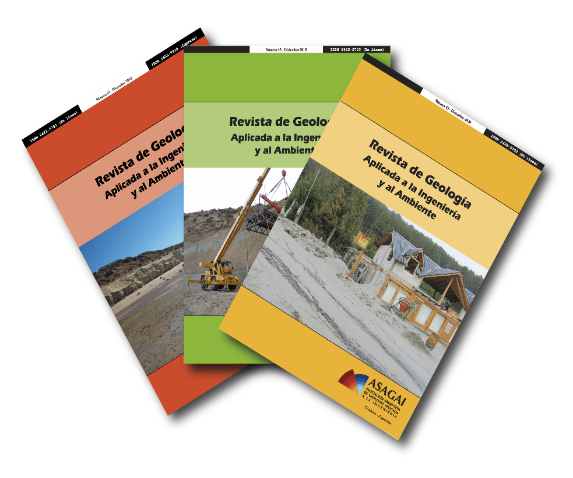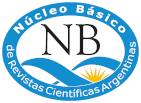Electrical resistivity tomography applied to the prospecting of groundwater in a coastal sector of the southwest of Buenos Aires, Argentina
Keywords:
Coastal Dunes, Electrical resistivity tomography, Hydrogeology, ProspectingAbstract
The coastal sector of southwestern Buenos Aires, with an arid to semi-arid climate, is characterized by a chain of coastal dunes. This psammitic dune chain hosts a free aquifer that carries water suitable for human consumption, being the only source of supply for the localities of the area. The objective of this study is to identify the geological conditions of the subsurface, which determine the quality and quantity of groundwater available for human consumption, through the use of electrical tomographies. The applied methodology consisted on the execution and parameterization of electrical tomographies of the subsurface in different sectors of the coastal chain, together with the interpretation of the electrical resistivity images generated, taking into account geological, geomorphological and hydrogeological aspects. As a result, the identification, in the generated images, of lithological and stratigraphic features closely related both to the hydraulic parameters of the aquifer and to the variations in the chemical quality of the water stands out. In this sense, the presence of paleochannels and lithological lateral variations, among other aspects, was confirmed. The parameterization of the method allows to define intervals of resistivities correlatable with the hydrogeological characteristics of the chain of dunes. It is concluded that the applied methodology is very useful for the geological/hydrogeological knowledge of the subsurface and provides accurate and useful data for the rational exploitation of the aquifer and the planning of groundwater catchment works.
References
Aramayo, S. A. y Manera de Bianco, T., (1989). Nuevos hallazgos de mamíferos pleistocénicos en el Yacimiento de Playa del Barco, Provincia de Buenos Aires, Actas, Primeras Jornadas Geológicas Bonaerenses (1985): 701 -712 Tandil.
Auge, M., (2004). Regiones hidrogeológicas. República Argentina y provincias de Buenos Aires, Mendoza y Santa Fe. 104 p
Fidalgo, F., Colado, U.R. y De Francesco, F. O., (1975). Sobre ingresiones marinas cuaternarias en los partidos de Castelli, Chascomús y Mag¬dalena (Provincia de Buenos Aires). 5° Congreso Geológico Argenti¬no, Actas 4: 225-240, Carlos Paz.
Loke, M. H. (2004). Tutorial 2D and 3D electrical imaging surveys. 128p. (disponible en: http://www.geotomosoft.com/coursenote.zip).
Ruffo, A; Albouy, R.; Bastianelli, N. y Carrica, J. (2019). Humedales en la franja de médanos costeros entre Monte Hermoso y Pehuen Có, provincia de Buenos Aires, Argentina. Tipificación hidrológica. Boletin Geológico y Minero de España. En prensa.
Thornthwaite, C. W., (1948). An approach toward a rational classification of climate. Geolo-gic. Rev. Vol. 38. 55-94. En Custodio y Llamas 1976. Hidrología Subterránea, Ediciones Ome-ga, Barcelona. ISBN 84-282-0446-2. 323-324.
Zavala, C., (1993). Estratigrafía de la localidad de Farola del Monte Hermoso (Plioceno-reciente), provincia de Buenos Aires. 12º Congreso Geológico Argentino y 2º Congreso de Ex-ploración de Hidrocarburos, Actas 2,228-235.
Downloads
Published
Issue
Section
License
Copyright (c) 2022 Andres Gabriel Ruffo, Edgardo René Albouy, Juan Manuel Giorgi, Matias Rey, Lucia Belen Carrica, Nerea Bastianelli

This work is licensed under a Creative Commons Attribution-NonCommercial-ShareAlike 4.0 International License.
Attribution - Non-Commercial - Share Alike (by-nc-sa): No commercial use of the original work or any derivative works is permitted, distribution of which must be under a license equal to that governing the original work.










